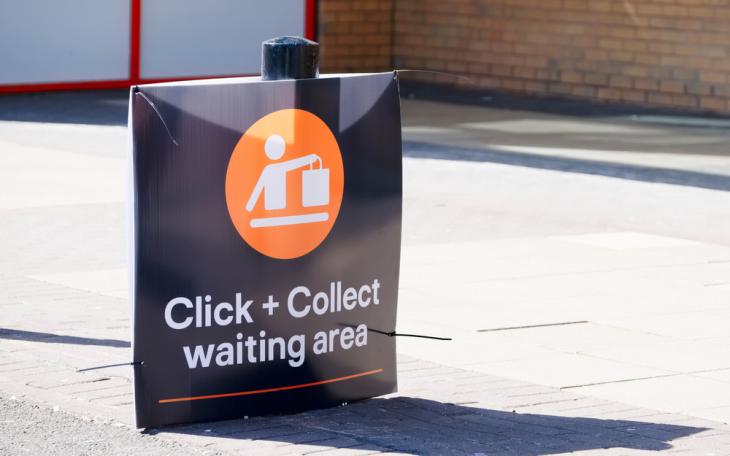Can Click and Collect save the high street?

By Andrew Adie
Reform of the UK’s mail system could mean that Post Offices no longer have to exclusively handle post and parcels for Royal Mail and could instead become hubs for click and collect/returns for the numerous ecommerce companies now flourishing in lock-down.
Given that the Post Office still has around 11,500 branches across the country, this could represent a significant step forward in the UK’s hybrid bricks and clicks retail model. Yet, as we live through a second lock-down, and with estimates suggesting that online sales have surged by around £4.5 billion during Covid, is click and collect able to save the High Street or merely seal its doom?
According to Retail Gazette at least 80% of UK retailers now offer click and collect services with figures from GlobalData suggesting that the click and collect market in the UK could be worth £9.6bn in 2022.
When we look at figures from between the stage I and stage 2 lockdown, they support the theory that we are seeing structural change towards online shopping. The Online Retail Index from IMRG and Capgemini, found that online retail sales in June surged 33.9 per cent year-on-year, despite the fact that the UK was seeing high streets re-opening at this point.
With a Covid 19 vaccine on the horizon and an economy and population keen to get back to a more normal way of life, it looks likely that during 2021 we will start returning more regularly to our offices and workplaces and working from home less. In theory that should mean that click and collect becomes ever more popular as we become more nomadic and less able to be at home all the time, waiting for the ubiquitous delivery driver.
All of this makes a rather mixed picture for the UK high street. While the relentless surge towards online shopping, accelerated by Covid, is not good news the genie cannot be placed back in the bottle. If click and collect becomes a way to boost convenience for a population addicted to the ease of the Internet but constrained by the demands of ‘blended’ working then with the right approach, click and collect could be a significant boost to footfall
There is a further ray of hope. The adage that you ‘go to where your customers are’ remains true. While ecommerce has the ultimate edge on that one (by putting a million shops into your pocket) it’s also surprisingly time consuming and it’s not a truly sensual experience.
As we emerge from lockdown 2 (or maybe even lockdown 3 or 4) the pent up desire for people to get out the house, to try things out or on, have human connection and experience something other than staring at a screen will surely grow. The local high street is perfectly poised to address that in a convenient way.
Shopping and consuming locally also has the potential to bring a lower carbon footprint and meet environmental goals that are key to many consumers.
The High Street also has a huge advantage over the Internet, it knows its local customer. You may push back at that comment and say that the algorithms of Google and Amazon know us all better than we know ourselves but I wonder how true that is. Most algorithms work on data, which is by its nature historical.
We’re living through a period of such seismic change that I wonder if people will throw everything in the air, scream ‘sod it’ and seek a world that offers more impulsive pleasure, immediacy and meets socially important goal such as being sustainable and supporting the community that has sustained them during Covid.
In truth much of this is an unknown but click and collect hubs offer an opportunity for the high street to gain some benefit from the ecommerce revolution, and judging by the numbers emerging that could be a significant spike in footfall, if harnessed in creative ways.
All of this should augur well for the High Street, even in an era of structural change that has seen an acceleration in the growth of online shopping








